Table of Contents
- Chaos: Making a New Science
- The Code Book: The Science of Secrecy from Ancient Egypt to Quantum Cryptography Paperback
- Fermat's Enigma: The Epic Quest to Solve the World's Greatest Mathematical Problem
- Zero: The Biography of a Dangerous Idea
- E=mc2: A Biography of the World’s Most Famous Equation
- To Engineer Is Human: The Role of Failure in Successful Design
- The Evolution of Useful Things: How Everyday Artifacts-From Forks and Pins to Paper Clips and Zippers-Came to be as They are
- The Pencil: A History of Design and Circumstance
- The Design of Everyday Things
- Structures: Or Why Things Don't Fall Down
- Pinball Effect: How Renaissance Water Gardens Made the Carburetor Possible
- Circles
- Collapse
- The Immortal Life of Henrietta Lacks
- Stiff: The Curious Lives of Human Cadavers
- The Man Who Mistook His Wife for a Hat and Other Clinical Tales
I’ve collected some of my favorite non-fiction books for this list. Most of these are popular science books that cover some topic in a presentable way that make them ideal for casual reading. None of these books need note-taking, and none of them are meant to be definitive texts on any subject. Many of these I read in high school, and many of them were very influential to me personally. All are books that I’ve recommended to friends in the past - so consider this a thumbs-up for the entire list.
The links within this post are affiliate links to purchase these books. All of these are books that I’ve read, enjoyed, and have a place on my book shelf. Many of these I’ve purchased additional copies of and given as gifts!
If you do read any of these, drop me a note and let me know if you enjoyed them! You can find me on Twitter at @there4dev
Popular Science and Math Books

James Gleick, 1987 and revised 2011
This book spurred my interest in scientific research in the ninth grade. I build a Lorenzian waterwheel with a charting system built from Lego. I used it to try to chart the transition of stable to chaotic behavior in the system. This book is relatable and fascinating in it's approach to explaining the field of chaos theory.
I can remember having a moment when I finally understood the behavior of Newtonian root finding, explained simply and clearly. However, the book is not entirely technical, and it introduces some of the people that were central to creating this important field of research. Chaos is deep, intriguing, and worth investigating.
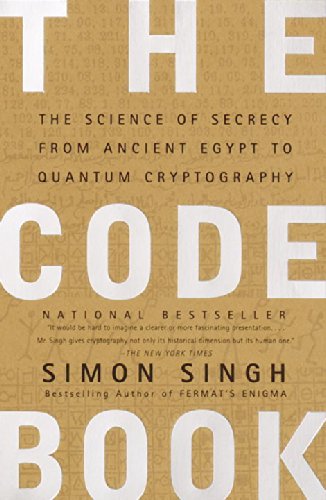
Simon Singh, 2000
Secrecy has been important throughout history. This book traces the history of secret code as a method for secure communication. This book covers the entire history of code, including interesting topics on Mary, Queen of Scots, the Navajo Code Talkers, and the modern use of encryption in the internet. This book works to show the impact that cryptography has had on history, and how important it will be in the future. This book is very entertaining and interesting. It’s perhaps a little short on some details, but as a popular science book, it is very casually readable.
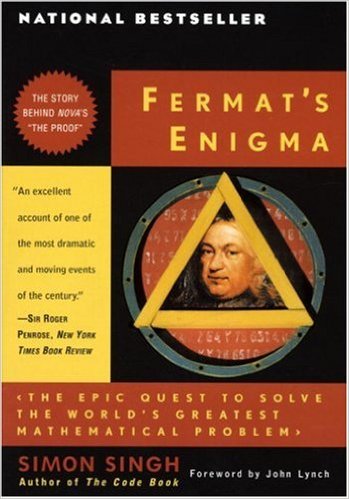
Simon Singh, 1998
Another from Singh, this book studies the history of the pursuit of the last theorem of Pierre de Fermat. He posed a simple mathematical equation that remained unsolved for 350 years. I hesitate to call this a page-turner, for after all, it is a math book - but… the historical detail, the fascinating characters, and sometimes deeply emotional turmoil of those who spent their lives in devotion to this knowledge is compelling reading. Singh delivers a detailed history of the problem, a quick history of mathematics, and one man’s work to push the boundaries to solve this problem. It’s a captivating tale.

Charles Seife, 2000
There are several books written about the history of zero, and this may be the least serious of the group. At times, it’s a little too humorous and light. But, it does offer an interesting history of our struggle to address the concept of Zero - the one location on the number line that makes division explode and our head sometimes hurt from conflicting expectation. While the book is not without it’s flaws in it’s approach to calculus and to some extent all of Newtonian and classical mechanics, the overall history lessons in the book, and its approachable nature, make it an appealing book to read one day on vacation.
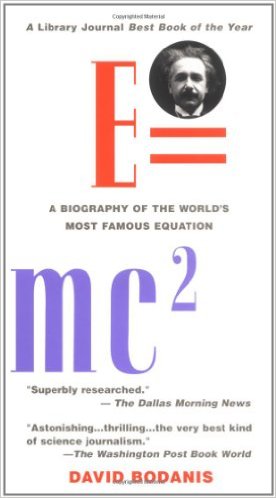
David Bodanis, 2001
This books presents the most famous equation in two parts. One section explores each of the symbols in the equation. This builds up an understanding of the parts and how they relate to one another. In the second section, Bodanis explores the equation in context. From the creation of the atomic bomb, to our understanding of special relativity, to presenting a bit of a primer on modern cosmology. This book is an well constructed mix of history, theory, and science.
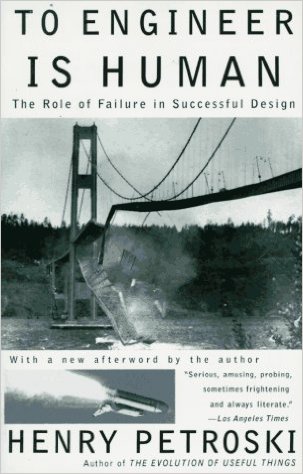
Henry Petroski, 1992
We are all engineers. Whether we’re just stacking dishes so that they don’t fall over, building a dog house from scrap wood, or designing a nuclear reactor - we all are familiar with the failure modes of our constructions. In this book, Petroski takes us through historical failures with both forensic engineering and an eye for human details. This is an accessible book that anyone can read - given at least a passing interest in Civil Engineering.
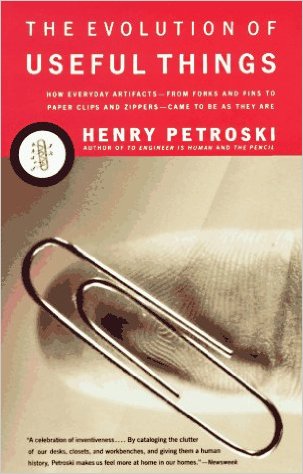
Henry Petroski, 1994
In this book Petroski researches how some of our most ubiquitous artifacts of modern living came to be. Our forks have four tines - and this is a story worth reading about. Each of the everyday items that he introduces has been exhaustively researched, and then told as a story with care to the creators and people that influenced the history of the object. The book is a little repetitive in it’s approach to some items, but overall it’s an interesting way to re-frame so many of the items in our daily lives.
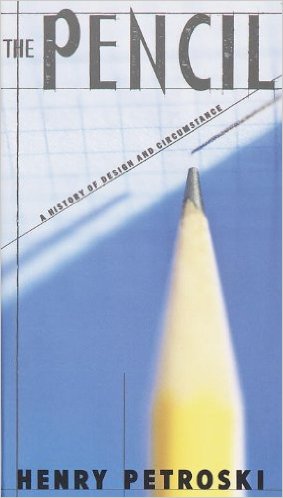
Henry Petroski, 1992
Petroski traces the origin of the pencil in wonderfully excruciating detail. The historical research and detail is stunning. This book traces the history of the pencil from it’s beginning in ancient Greece to the modern pencil. Each component of the pencil is examined in detail, and is presented as the culmination of generations of engineering design, discovery, advancement, and persistence. This books presents the pencil as a reference for the rise of modern manufacturing, and uses it as a way to explore the rise of the technology needed to create the seemingly simple pencil. This book really requires that you be interested in minutiae and perhaps should not be your first Petroski book. That said, it’s one that I really enjoyed.
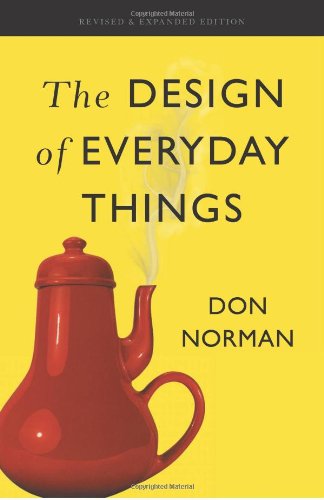
Don Norman, 2013
Have you ever tried to pull a door that only operates as a push? Have you ever been unsure which way to insert a ticket into a machine? This books works through the basics of design in discoverability, affordance, signifiers, feedback, and constraints. Norman changed the field with this book, and it’s a valuable resources for learning to think in terms of use. This is a classic, and I highly recommend it.

J.e. Gordon, 2003
You may have noticed a trend in this list - engineering presented with history and humor. This book is certainly in the same category. Gordon presents the concepts of suspension bridges, dams, bat wings, and all manner of engineering with a bit of whimsy and humor to accompany historical background. With minimal math, and lots of real world examples, this book is a great overview of modern engineering and is a very accessible book.
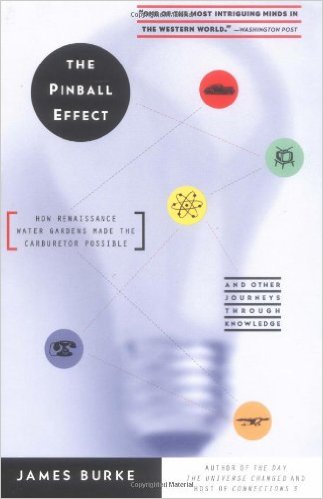
James Burke, 1997
If you never saw the TV series from James Burke called Connections - you must. Burke is the undisputed master of serendipity and history. The Pinball Effect continues this tradition with an examination of the interconnectedness of history. This book is a sometimes frenetic look at how the modern day came to be.

James Burke, 2009
This is a collection of essays from James Burke originally published in Scientific American. I can recommend any of books as well, but this collection of essays is great for reading in short snippets over a few months, lest they become a bit repetitive. They have the clever tone of his TV show, boiled down to easy to read short essays.

Jared Diamond, 2011
Ever the dystopian, I’m leaving Guns, Germs, and Steel off this list, and instead favoring this book from Diamond. In this book, he probes the cause of civilization collapse. There is much to be learned from the recurring theme of environment catastrophe, and the book could lead some readers to be a little distraught out our future. The book is consistent and well researched, and is an enjoyable book to read.
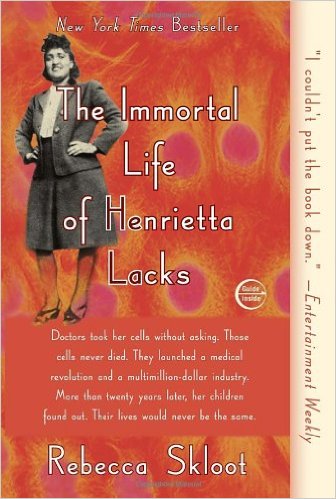
Rebecca Skloot, 2011
This is the story of the creation of the HeLa line of human cells. They are an extraordinary resource for medical research that came from a biopsy taken from Henrietta Lacks, a poor black tobacco farmer. This book examines the troubled history of race and ethics in medicine while simultaneously exploring the relationships within the family of Henrietta Lacks
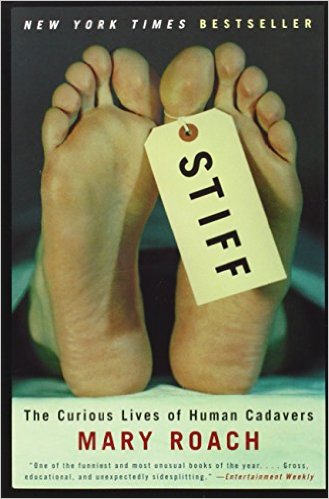
Mary Roach, 2004
You won’t believe me when I try to explain how funny this book is. It’s a book about dead bodies - the stories our bodies could tell after we’re no longer using them. She deftly explains the contributions of cadavers to medicine, organ transplants, and how our death has changed through history. This is a bizarre and wonderful book that you may be prompted to read in one sitting.

Oliver Sacks, 1998
This is a classic introduction to the clinical writing of Oliver Sacks. This is a collection of case studies that demonstrate the vagaries of the human condition. Sometimes heartbreakingly sad, other times quite funny, this book shows his critical attention to detail, and should serve as an entry point into his other writings.
Again, if you read any of these, please let me know!